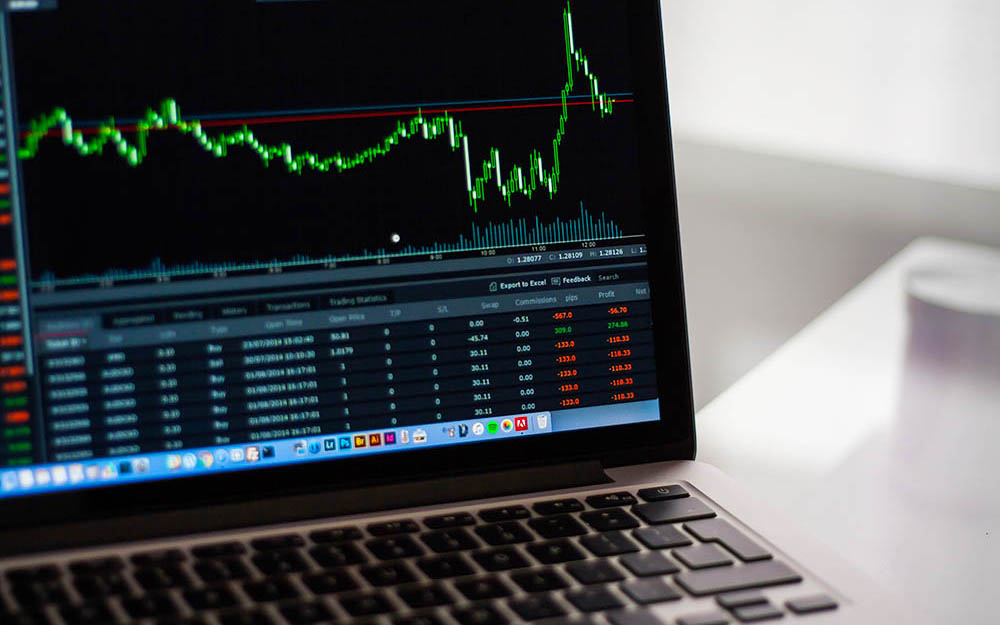3 Emerging Technologies that will Revolutionize the Future World of Fintech

When it comes to the world of fintech and emerging financial technologies, there is a progression that often comes in waves. The first wave is created by innovators and spotted by early adopters who see opportunities in technology to solve current problems and make life more convenient and efficient. The second wave is the early majority adopters who establish that technology as a solid and legitimate use in society. The Third wave is followed by a late majority and laggards who aren’t as receptive to change and innovation of new technology. There are 3 emerging technologies that will revolutionize and cause market disruption in the world of fintech. Major companies and individuals need to know about these 3 technologies, and how they will be useful before they fall behind and become laggards of the industry.
Going back in time to the 1950s, the first story of fintech emerged with the credit card industry, eliminating the cumbersome problem of carrying cash. According to Diners Club, this change event happened in 1949 when businessman Frank McNamara forgot his wallet while dining out at a New York City restaurant. It was an embarrassment he was determined to never face again. Luckily, his wife rescued him and paid the tab.
In February of 1950, McNamara returned to Major’s Cabin Grill with his partner Ralph Schneider. When the bill arrived, McNamara paid with a small cardboard card, known today as a Diners Club® Card. This event was hailed as the “First Supper,” paving the way for the world’s first multipurpose charge card. In its first year of business, Diners Club® grew to 10,000 members from New York’s business elite, with 28 restaurants and two hotels prepared to accept monthly billing in respect of this select clientele. The Diners Club credit card was the first use of fintech with modern established credit card companies like American Express, Carte Blanche, and Bank of America issuing their own credit cards 8 years later. According to Business Insider, A man ahead of his time, Bloomingdale, was the one to predict the eventual demise of cash and rise of the credit card: “The day will come when the plastic card will make money obsolete,” he said. The early history of the credit card is important to understand in order to contextualize where the modern industry of fintech is headed. Today, there are people making similar claims as Bloomingdale did back in the 1950s that the emergence of crypto currency in the fintech industry would soon replace the use of cash, and possibly the use of credit cards.
Crypto Currency
Unlike the clear early history of credit cards, the original founder of the first widely known cryptocurrency Bitcoin known as “Satoshi Nakamoto” is rather mysterious and unknown. Compared to McNamara’s clear reason to create the first credit card, there is no clear motive from Satoshi Nakamoto as to why this new financial technology was created. There is however a number of key characteristics built into the technology of cryptocurrency and the use of the blockchain that will forever change the world of fintech and how we make financial transactions.
In simplest terms, the technology of crypto currency is the “internet of money”. In the same way that the internet allowed people to instantaneously communicate with other people around the world, cryptocurrency will allow peer to peer (P2P) transactions of digital money “crypto” through the blockchain ledger for goods and services instantaneously. The blockchain will eliminate the need for an intermediary third-party to verify that transaction. According to Fintech Finance article, Seamless cross-border payments is one of the real potentials of cryptocurrency technology. The current systems used for moving money across global borders are full of friction, and some processes utilize many multiples of banks and intermediaries. A blockchain provides a more simplified process, based on inherent accountability, assurance, and verification. The elimination of third-party intermediaries will not only speed up transactions, but it will also eliminate the extra costs and fees associated with using a third-party service, saving costs in a P2P transaction.
The “technological backbone” of cryptocurrency known as the “blockchain” in simplest terms is a digital DNA that contains a specific piece of information based on transactions in blocks. According to Block Geeks, one party to a transaction initiates the process by creating a block. This block is verified by thousands, perhaps millions of computers distributed around the net. The verified block is added to a chain, which is stored across the net, creating not just a unique record, but a unique record with a unique history. Falsifying a single record would mean falsifying the entire chain in millions of instances. This simple process represents a transaction of currency you can follow through the chain to build a picture of each transaction, ensuring accountability and verification.
According to a recent Forbes article, banking continues to be disrupted by fintech startups, as the crypto-enabled marketplace is turning the financial world on its head. Wherever you stand on cryptocurrency, it echoes back to the 1990s dot-com bubble, which is palpable. As in the internet era, we are again in the midst of a revolution, with the new guard replacing the old and unlocking an entire universe of alternate commercial markets. This implies that crypto technology will undoubtedly cause market disruption in the future of fintech despite early investors looking for capital gains, similar to the dot-com bubble era of investing.
Smart Contracts
In addition to cryptocurrency using blockchain technology for financial P2P transactions, it can also be used for settling “self-executing contracts” that will eliminate the need for third-parties like lawyers or stock brokers and avoiding potential tampering or mistakes of written legal documents. According to Block Geeks.com, The best way to describe smart contracts is to compare the technology to a vending machine. Ordinarily, you would go to a lawyer or a notary, pay them, and wait while you get the document. With smart contracts, you simply drop a bitcoin into the vending machine (i.e. ledger), and your escrow, driver’s license, or whatever drops into your account. More so, smart contracts not only define the rules and penalties around an agreement in the same way that a traditional contract does, but also automatically enforces those obligations. Smart contracts use code to automate given tasks, saving hours off of a given range of business processes. Smart contracts use encryption technology on the blockchain ledger so it adds a level of cyber security from potential hackers who want to access private records. There will also be multiple copies of the smart contracts on the block chain network as a backup.
Insurance Technology (INSTECH)
The future of insurance technology or “instech” will cause major changes in how we use our insurance policy. Our insurance policy will be affected by the integration of electronic devices like smartphones, smart locks, and black boxes in cars to detect the possibility of risk and usage in real time. FT.com explains the application of instech in detail with the following story: Imagine that mobile phone signals or other sensors detect that a person is about to walk down a road where several people have recently fallen on ice. The insurer will react by either sending a message warning the person to walk more carefully or else automatically increase the premium and cover while the policyholder is walking down that road. In the shorter term, more precision is likely to mean that insurance will be broken down into easier to digest chunks. The days of the annual policy may be numbered. This possibility of instech being used to analyze the physical environment with real-time data will save consumers from overpaying for an annual policy, or something that they don’t need, and places more personal responsibility on the consumer to make good decisions. Instech can also be used to reduce the cost of car insurance based on how many miles or hours the car is driven per month. As a result of the black box, your car’s insurance could be partially turned off if parked and not in use. Instech integrated into your vehicles devices and data sent to the insurance company consumers could save money based on the actual usage of the vehicle rather than having a costlier blanket policy based on estimates.
Conclusion:
The future of Fintech looks good for the consumer that is willing to change and adapt, but will undoubtedly cause market disruption for companies and consumers that do not want to adopt new technologies of crypto currency, smart contracts, and integrate the use of INSTECH.
Resources:
Diners club.com
https://www.dinersclubus.com/home/about/dinersclub/story
Business insider.com
http://www.businessinsider.com/history-of-credit-cards-2015-2
Actuary.com
http://predictions.theactuary.com/features/instech-and-the-innovation-boom/
Ft.com
https://www.ft.com/content/bb9f1ce8-f84b-11e6-bd4e-68d53499ed71
Block Geeks
https://blockgeeks.com/5-benefits-cryptocurrency/
https://blockgeeks.com/guides/smart-contracts/
https://blockgeeks.com/blockchain-explained/
Fintech Finance
http://www.fintech.finance/01-news/blockchain-cryptocurrencies-and-banking/

About The Author
Talisman Editor Team